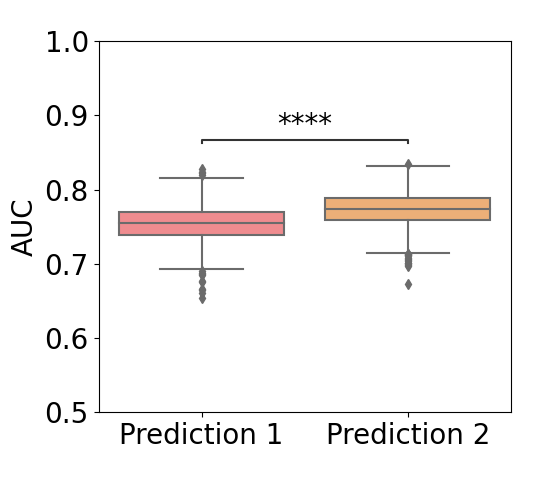In silico simulation for better prediction of biochemical recurrence in prostate cancer radiotherapy
Renaud de Crevoisier,
France
PO-2120
Abstract
In silico simulation for better prediction of biochemical recurrence in prostate cancer radiotherapy
Authors: Carlos Sosa Marrero1, Aurélien Briens2, Pierre Fontaine1, Oscar Acosta1, Renaud de Crevoisier2,1
1Univ Rennes, Inserm, LTSI - UMR 1099, Rennes, France; 2CLCC Eugène Marquis, Radiation Oncology, Rennes, France
Show Affiliations
Hide Affiliations
Purpose or Objective
In prostate cancer radiotherapy, biochemical recurrence has been traditionally predicted from clinical parameters with however limited performance. Mechanistic modelling of tumour growth and response to irradiation allows, through in silico simulation, to better comprehend the response of patients to a given irradiation schedule. The objective of this work was thus to use a simulation marker of our previously developed mechanistic model to obtain better biochemical recurrence predictions.
Material and Methods
A cohort of 129 patients from the CLCC Eugène Marquis patients with localised prosate cancer and treated with EBRT was used for this study. Prior to the beginning of treatment, 3 T MRI was performed. Sequences included axial turbo spin echo T2-w and axial diffusion using multiple b-values. Apparent diffusion coefficient (ADC) maps were calculated. Subsequently, all subjects received total doses between 74 and 80 Gy, delivered in 2 Gy fractions. Then, patients were followed up by means of clinical examination and PSA level analysis every 6 months for at least 4 years. A total of 20 patients suffered biochemical recurrence, defined according to the Phoenix criteria, within this delay.
In order to simulate tumour response to radiotherapy with our mechanistic model, 206 2D digital tissues representing the 206 patients of the cohort were built. In depth, tumour volume and average T2-w and ADC were extracted from the corresponding pre-treatment images and then used to initialise the virtual tissues. An initial prostate-specific vascular density of 3.8% was supposed for every digital tissue. The radiotherapy protocol administered to each patient of the cohort was simulated on the corresponding digital tissue and the number of virtual tumour cells at the end of treatment was obtained.
Then, two 4 year biochemical predictions were performed using the logistic regression model (5-fold cross-validation, 1000 repetitions). Prediction 1 was made from tumour and treatment parameters (Gleason score, PSA level, T stage, hormonotherapy prescription and total dose). Prediction 2 was performed from these features, plus the number of virtual tumour cells at the end of treatment obtained after simulation.
Results
Results for the two biochemical recurrence predictions are presented in Fig. 1. A significantly higher (p-value ≤ 0.0001, given by a Wilcoxon signed-rank test) AUC was obtained for Prediction 2, which incorporated the simulation-based marker (median of 0.78 vs. 0.75).

Fig 1. AUC of 4 year biochemical recurrence predictions. Prediction 1 was made from tumour and treatment parameters. Prediction 2 incorporated our simulation-based marker.
Conclusion
The use of simulation-based markers results in significantly better biochemical recurrence predictions after standard irradiation schedules in the context of prostate cancer.